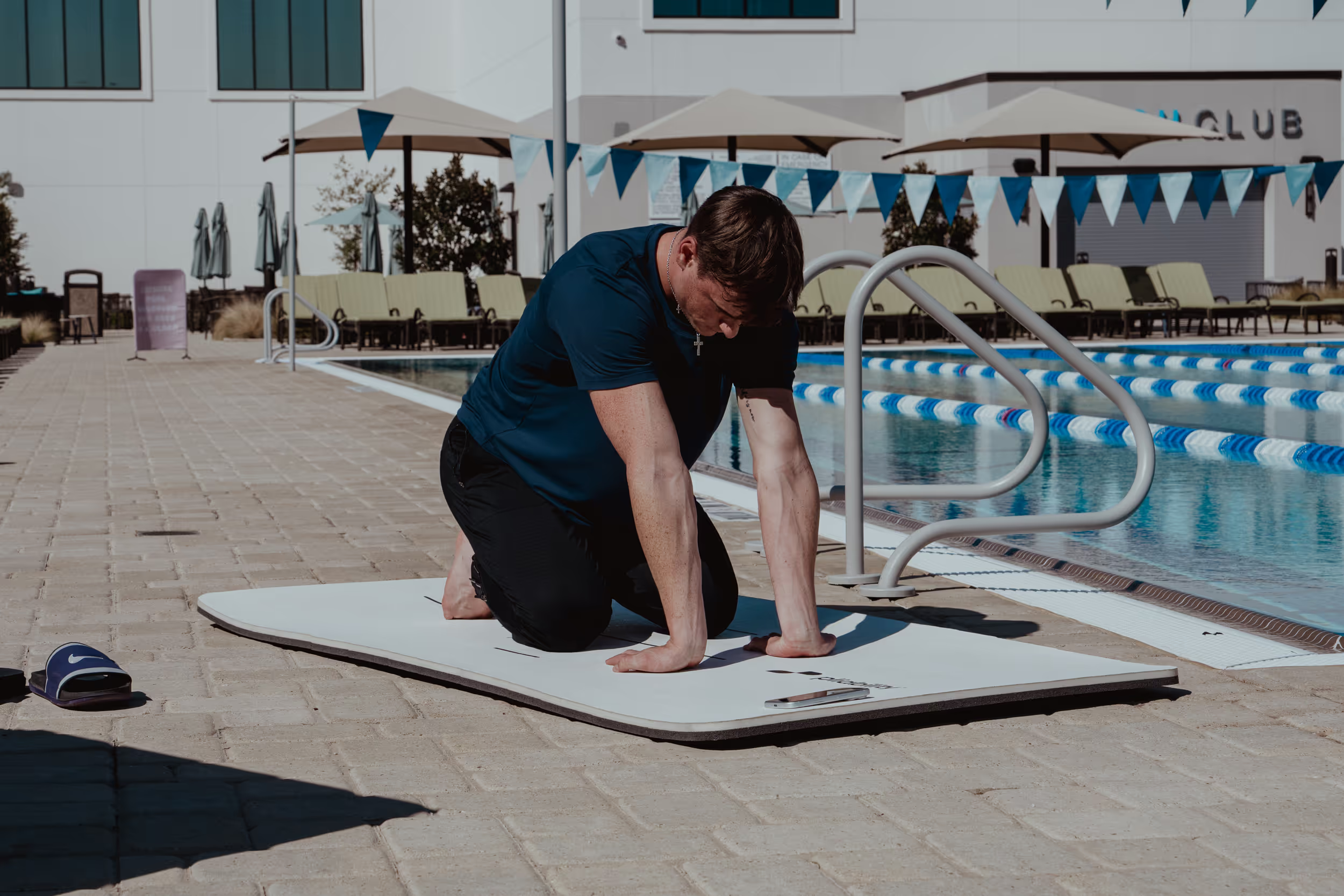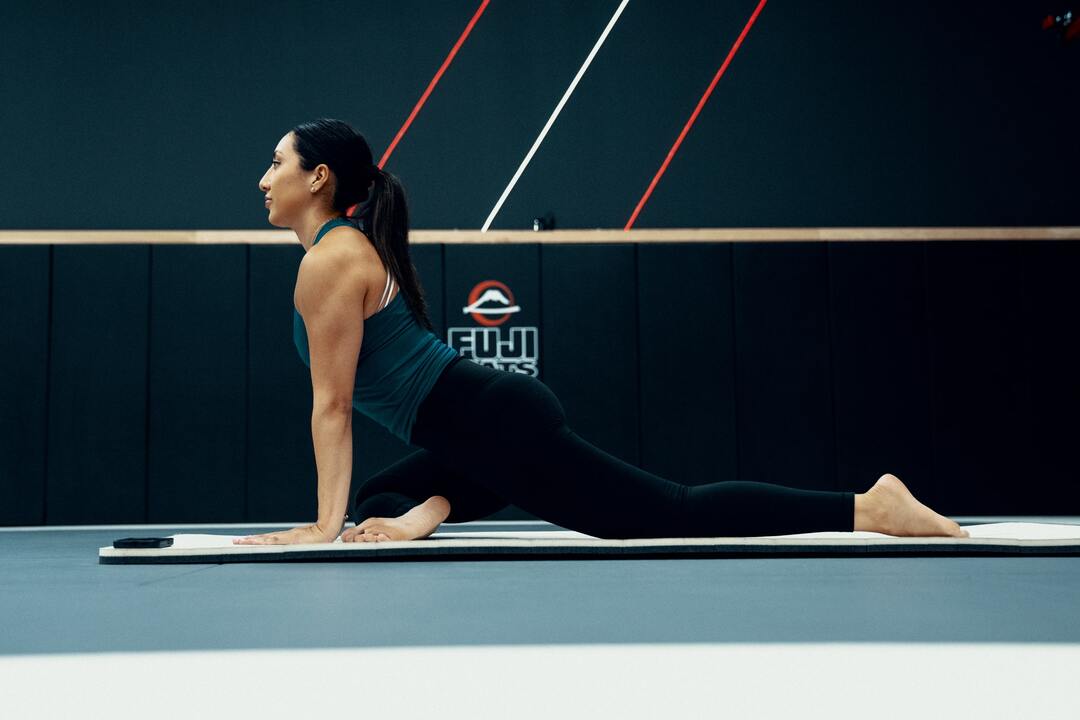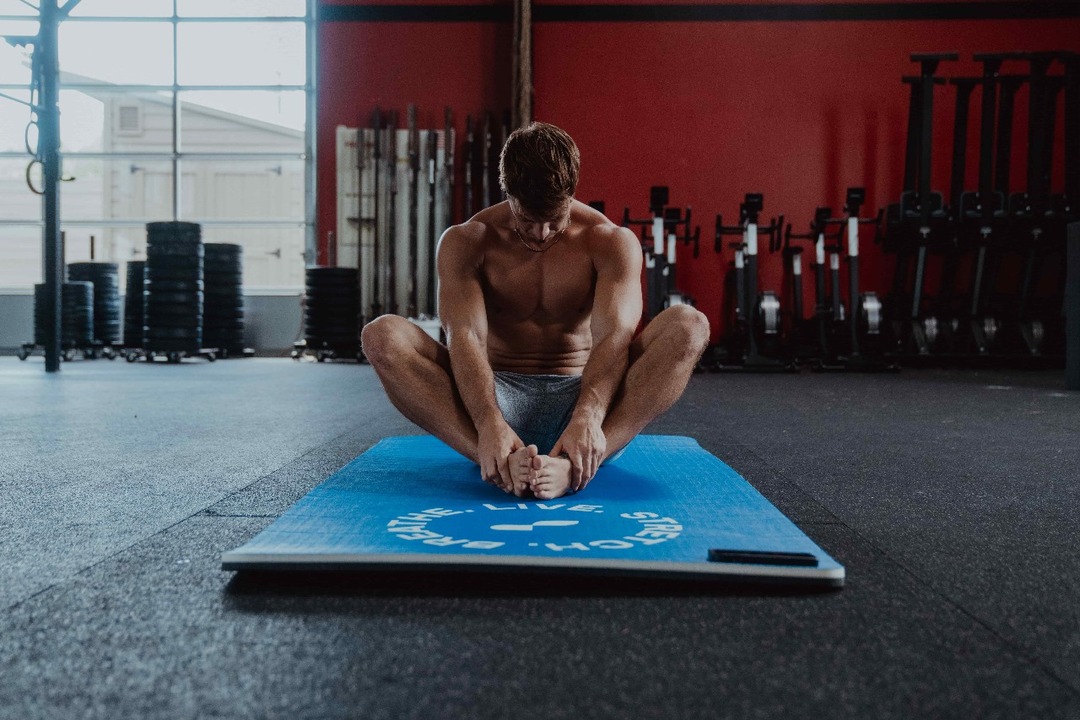Have you ever woken up with hands that feel stiff, tight, or hard to move, like your fingers forgot how to bend overnight? It’s a small thing that can feel alarmingly big, especially when it makes everyday tasks like gripping a mug or typing uncomfortable. Hand tightness can sneak up for many reasons, from overuse and inflammation to changes in circulation or joint health, but the good news is, it’s rarely something you just have to “live with.” In this guide, we’ll break down why your hands might feel tight, share the Exercises for Stiff Neck and Shoulders to restore flexibility, and explain what your body is trying to tell you, so you can move, type, and grip freely again without pain or stiffness.
Pliability’s mobility app guides you through short, easy routines and targeted stretches that reduce tightness, improve grip, and build lasting range of motion so that you can turn understanding into action without guesswork. Use it to track small wins and get practical plans that fit your day.
Why Do My Hands Feel Tight?

Hand tightness often feels like stiffness, a reduced range of motion, or a sense that the fingers and palm do not move as smoothly as they should. You might feel tightness as:
- Morning stiffness that eases after you move
- Tension after heavy use
- A chilly stiffness when the air gets cold
Sometimes the hands click or catch when you bend a finger. Other times the muscles feel tense and the grip feels weaker. Do these patterns match when your hands feel tight?
Overuse and Repetitive Strain: Why Doing the Same Thing Can Tighten Your Hands
Using your hands frequently, such as typing, gripping tools, texting, playing an instrument, or performing repetitive work, can strain muscles, tendons, and small joints. That strain causes swelling and tension. The result is tightness, aching, and difficulty making fine movements. Rest, changing technique, and simple stretches often reduce symptoms if the problem is recent. What activities do you repeat most each day?
Arthritis: The Main Types that Stiffen Hands
Osteoarthritis
Osteoarthritis occurs when joint surfaces wear down with age or repeated stress. It often begins as a dull ache and progresses to stiffness, a reduced range of motion, swelling, and difficulty gripping or pinching objects. Symptoms tend to worsen over time.
Rheumatoid Arthritis
Rheumatoid arthritis is an autoimmune condition that causes joint inflammation and pain. People often wake with stiffness that lasts an hour or more. Joints may feel warm and weak and with progression, the shape of the hand can change.
Psoriatic Arthritis
Psoriatic arthritis is associated with a skin condition called psoriasis, which leads to joint inflammation. It can cause swelling, stiffness, and limited finger movement. Sometimes one finger swells more than the others and feels tight and stiff.
Gout
Gout results from uric acid crystals collecting inside joints. A hand joint can become red, swollen, and painfully stiff during attacks. These episodes can come on quickly and feel intense.
Fractures of the Hand: How a Break Leads to Stiffness
A broken bone in the hand can cause immediate stiffness, pain, and reduced movement. Because the hand has many small bones, a fracture can affect how nearby tendons and ligaments glide. If the broken piece shifts out of place, motion and grip may stay limited until the bone heals. Have you recently fallen or received a blow to the hand?
Dislocations of the Upper Extremity: When Joints Pop Out of Place
A dislocation of a finger, wrist bone, elbow, or shoulder can create hand stiffness before or after the joint resets. Dislocations often happen with high force and may come with fractures. After a dislocation, you may experience pain, swelling, and difficulty moving the hand in specific directions.
Finger Sprains: A Common Source of Tight Feeling
Spraining a finger stretches or tears the ligaments around a joint. That injury causes swelling, pain, and stiffness that limit daily tasks. Many sprains improve with rest, ice, and elevation; however, persistent stiffness or deformity should be evaluated further.
Injuries to Tendons or Muscles: Why Tendon Damage Locks Motion
Tendons connect muscles to bone and let you bend and straighten fingers. A cut, crush injury, or severe strain can damage flexor or extensor tendons, leading to an inability to move a finger or a tight, stuck feeling. Tendon injuries sometimes need medical repair to restore normal motion.
Poor Circulation and Cold Sensitivity: Why Cold Hands Feel Tight
When blood flow to the hands drops, tissues can feel tense, numb, or tingly. Conditions such as peripheral artery narrowing or Raynaud-type reactions cause spasm of the tiny blood vessels, resulting in:
- Tightness
- Color changes
- Cold sensitivity
Warming the hands and improving circulation can reduce these symptoms.
Nerve Compression: Pinched Nerves that Make Hands Feel Tight
Nerves that run through the wrist and arm control hand movement and sensation. Compression of the median nerve at the wrist, known as carpal tunnel syndrome, causes tightness, numbness, tingling, and a weakened grip. Compression of other nerves, such as the ulnar nerve at the elbow, can also cause tightness and impaired hand function. Do you get numbness or tingling along with the tightness?
Dehydration and Electrolyte Changes: Less Obvious But Real Causes
Low fluid intake and imbalances of sodium, potassium, magnesium, or calcium can make muscles feel tight or cramp. Dehydration makes tissues less flexible and can magnify the sense of stiffness after activity or in hot weather.
Inflammation and Infection: When the Body Reacts and Tissues Tighten
Local inflammation from a cut, bite, or joint infection causes swelling, warmth, and stiffness. Autoimmune inflammation, as in rheumatoid or psoriatic arthritis, creates similar tightness. Infections need prompt care to prevent lasting damage.
Hand Anatomy: Why So Many Structures Mean Many Possible Causes
The hand comprises 27 bones, 34 muscles, 27 joints, and over 100 ligaments and tendons. This complexity makes it easy to strain or injure one part while other parts compensate. As a result, stiffness can arise from problems affecting the bone, joint, tendon, ligament, muscle, blood vessel, or nerve. Which part of your hand hurts or moves poorly when you try to use it?
Symptoms that Often Come with Hand Stiffness and What They Suggest
Pain or Discomfort
Sharp pain after injury suggests a fracture or sprain. Dull aching with activity points more to overuse or osteoarthritis.
Swelling or Redness
Marked swelling and redness suggest inflammation or infection. Mild puffiness after heavy use points to strain.
Limited Motion
A fixed loss of motion after trauma may signal a fracture or tendon injury. Morning stiffness that improves with movement is more likely to be associated with inflammatory arthritis.
Weakness or Reduced Grip Strength
Weakness with numbness suggests nerve compression. Weakness without numbness can come from tendon damage or severe arthritis.
How to Narrow the Cause and What to Try First
Look for timing clues. Does stiffness arrive after rest or after activity? Is it seasonal or tied to cold weather? Note whether you have numbness, visible swelling, fever, skin changes, or a recent injury. Begin with simple steps:
- Rest
- Gentle range-of-motion exercises
- Alternating ice and heat as needed
- Adequate hydration
If signs include severe pain, obvious deformity, persistent numbness, fever, or worsening strength, seek medical evaluation and imaging. What pattern do your symptoms fit, and which first step will you try?
Related Reading
- Why Do I Have Trouble Walking After Sitting
- Why Am I Sore After Stretching
- What Do Tight Muscles Look Like
- Why Do Muscles Get Tight
- Why is Hip Mobility Important
- How Can Stiff and Tight Muscles Result in Back Pain?
- Why is My Back So Stiff
- Why Are My Shoulders So Tight
- How to Prevent Morning Stiffness
How to Prevent and Treat Stiff Hands

Keep your hands moving through the day. Shift grips, open and close your hands, and take short activity breaks every 20 to 30 minutes when typing or using tools. Use ergonomic tools such as:
- Cushioned grips
- Angled keyboards
- A supportive mouse
- Pens with larger barrels to lower joint stress
Hand Care and Overuse Prevention
Stay hydrated to support soft tissues and circulation. In cold environments, wear thin, warm gloves or use pocket warmers to maintain blood flow and prevent your hands from becoming too cold and tightening up. Change tasks before your hands feel tired and alternate hands when possible to prevent overuse.
Warm Up First: How to Prepare Hands for Stretching or Work
Warm hands increase flexibility and reduce resistance in tight joints and tendons. Soak hands in warm water for five to ten minutes, use a warm towel, or apply a low-heat pack for the same time. Try this before exercise, gardening, or repetitive tasks, and when stiffness is worst, such as after waking up, to reduce pain and make movement easier.
7 Simple Stretches to Loosen Tight Hands
These exercises aim to improve the range of motion, reduce stiffness, and make daily tasks feel easier. Stop if any exercise increases sharp pain, and work gently.
1. Flex and Bend
How to do it:
- Rest your bent elbow on a table or armrest with the wrist straight.
- Bend your fingers down toward the palm and straighten them back.
- After several bends, slowly make a fist and hold for 10 seconds.
- With fingers extended, tilt them upward as if catching a ball and hold for 10 seconds.
- Repeat 6 to 10 times on each hand, moving slowly to avoid aggravating inflamed finger joints.
2. Finger Touches
- Face your palm up and fully extend fingers.
- Bend your thumb and stretch it across the palm to touch the pinky and hold 5 seconds.
- Return to neutral, then touch the ring finger, middle finger, and index in turn, holding each touch for 5 seconds.
- Do 2 to 3 cycles for each hand. This improves thumb mobility and coordination.
3. Finger Sliding
How to do it:
- Place your palm down on a table with fingers spread.
- Keep each finger straight and slide it toward the thumb as far as comfortable, one finger at a time.
- Return fingers to the starting spread.
- Repeat 8 to 12 times per finger. This helps tendon gliding and reduces stiffness in the fingers.
4. Gentle Fist
How to do it:
- Relax the arm on a table or armrest.
- Clasp your fingers into a soft fist, with the thumb wrapping around them. Hold 45 seconds.
- Open the hand and spread fingers wide.
- Repeat three times. Move only as far as comfortable to avoid aggravating sore finger joints.
5. Fingertip Stretch
How to do it:
- Place a relaxed hand flat on a table.
- Gently press so fingers straighten and the palm flattens.
- Hold 30 to 60 seconds while breathing evenly.
- Release and repeat up to three times.
- Use this after warming to gain gentle extension in stiff fingers.
6. Grip Strengthener
How to do it:
- Squeeze a small, soft ball tightly for a few seconds, then release it.
- Continue for 45 seconds per hand.
- Rest the hand for 1 to 2 days after you complete this session to avoid overwork, especially if muscles or tendons are sore.
7. Pinch Strengthener
How to do it:
- Pinch a small, soft ball between your thumb and one or two fingers, and hold it for 30 to 60 seconds before releasing.
- Work each pinch position once or twice and allow 1 to 2 days of rest for that hand after training to let the tissues recover.
Gentle Exercises and Self-Massage for Daily Care
Add wrist flexion and extension, wrist circles, and tendon gliding sequences to your routine to improve range of motion. For tendon gliding, move from a straight finger position to a hook fist, then to a full fist, and then back to a straight position, repeating 5 to 10 slow repetitions. Use simple self-massage:
- Stroke from the wrist toward the fingers to support circulation
- Knead lightly across the base of each finger and the palm to ease tight bands
- Apply gentle pressure, not pain, and use warm oil or lotion if skin is dry, so soft tissue moves smoothly.
Heat and Cold Therapy: When to Use Each for Hand Tightness
Apply heat for 10 to 20 minutes to relax muscles and tendons before stretching; moist heat is often most effective. Use cold for 10 to 15 minutes when the joint is swollen or after an activity that causes flare-up, to reduce inflammation and pain. Try contrast baths by alternating warm and cool water for short cycles to stimulate circulation, but stop if symptoms increase.
Over-the-Counter Pain Relief: Practical Safe Use at Home
NSAIDs such as ibuprofen or naproxen can reduce pain and inflammation for short-term flares. Acetaminophen can help with pain without an anti-inflammatory effect. Follow label dosing and check with a clinician if you have:
- Stomach problems
- Kidney disease
- Heart disease
- Blood thinners
Use the lowest effective dose for the shortest period needed and combine medication with gradual movement and heat when appropriate.
Natural Supplements and What to Watch For
People use turmeric, fish oil, ginger, green tea, willow bark, devil’s claw, and Boswellia to help with inflammation or stiffness. Evidence is limited, and effects vary. Some supplements interact with:
- Blood thinners
- Blood pressure medicines
- Causes stomach upset
Consult with your clinician before starting any supplement, especially if you are taking other medications.
Medical Treatments a Clinician May Offer for Ongoing Hand Tightness
Suppose stiffness stems from inflammatory conditions, such as rheumatoid arthritis or psoriatic arthritis. In that case, a doctor may prescribe COX-2 inhibitors such as:
- Celecoxib
- Short courses of corticosteroids for flares
- DMARDs like methotrexate or sulphasalazine
- Biologic agents to slow joint damage
These drugs require monitoring for side effects and regular follow-up with a prescriber.
Splints, Casts, and How to Use Them Safely
Splints stabilize painful joints, help rest tendons, and protect after injury or surgery. Wear patterns vary; overuse can weaken muscles and reduce mobility. Follow the scheduled exercises prescribed by a clinician or therapist and perform the prescribed hand exercises when the splint is removed to rebuild strength and range of motion.
Steroid Injections and Enzyme Injections: Targeted Options
Steroid injections into a joint can reduce inflammation and stiffness for several weeks when oral medications are not effective. Still, clinicians limit the number of injections due to risks to tendons and ligaments. For Dupuytren contracture, collagenase enzyme injections can soften the thickened tissue, allowing the physician to break up the cords after one to two days.
Surgery and Postoperative Care for Severe or Fixed Stiffness
Surgery may be needed when other treatments fail or when structural problems exist. Procedures vary by cause. After surgery, the hand is often immobilized and then requires progressive therapy to restore motion and grip. Ask the surgeon about your expected recovery time and treatment needs, and schedule a follow-up appointment early.
When to See a Healthcare Provider and What to Bring
Seek urgent care for sudden, severe swelling, loss of motion, fever with local redness, signs of infection, or after trauma with deformity. Arrange an appointment if stiffness limits your daily tasks, persists beyond a few weeks despite home care, or if you experience persistent morning stiffness that lasts 30 to 60 minutes or more.
Prepare for Hand Health Assessment
Bring a list of symptoms, onset timeline, photos of hand position or swelling, current medications, and a note about tasks you cannot do so the clinician can assess for arthritis, tendon problems, nerve compression, trigger finger, or circulation issues, and recommend imaging, blood tests, or referral to:
- A hand therapist
- Rheumatologist
- Hand surgeon
How to Proceed Tonight If Your Hands Feel Tight
Warm your hands, do a gentle flex and bend sequence for a few minutes, then try fingertip stretches and a short massage to improve circulation and ease tightness. If pain limits movement, use ice for 10 minutes and schedule an evaluation within a few days if symptoms do not improve or if function remains reduced so a clinician can assess for inflammatory arthritis, tendonitis, nerve compression, or other causes and recommend targeted treatment.
Related Reading
- Stiff Feet in the Morning
- How Can Poor Posture Result in Back Pain?
- How Long Stiff Neck Last
- Stiff Feet in the Morning
- Why Does My Knee Feel Stiff
- How to Treat Stiff Fingers in the Morning
- Joint Stiffness in the Morning
- What to Do for Tight Muscles
- Why Are My Calf Muscles So Tight
- How to Loosen Tight Muscles in Legs
- How to Loosen Tight Lower Back Muscles While Standing
Improve Your Flexibility with Our Mobility App Today | Get 7 Days for Free on Any Platform

Pliability rethinks yoga for individuals who view movement as a performance. The app provides an extensive library of high-quality videos that focus on flexibility, recovery, pain reduction, and increasing range of motion. Daily updated custom mobility programs tailor sessions to your current needs so you keep progressing without guesswork.
The body scanning feature identifies asymmetries and tight areas, enabling you to target the exact joint or muscle that limits your movement. Use it alongside strength training, endurance training, or rehabilitation to improve movement quality and reduce the risk of flare-ups.
Why Do My Hands Feel Tight: What That Sensation Really Is
Tight hands can feel like stiffness across the fingers, a contracted grip, or pulling in the palm and forearm when you move. People describe:
- Decreased range of motion
- Morning stiffness
- Joint stiffness
- A sensation of tendon tightness
Tightness often manifests as reduced grip strength, difficulty fully extending the fingers, or a sensation that the hand is stuck in a position rather than moving freely. Which of these fits your experience right now?
Common Causes of Hand Tightness You Should Know About
Overuse and repetitive strain injury can cause inflammation and microtrauma to tendons and joints, resulting in pain and stiffness. Carpal tunnel syndrome compresses the median nerve, causing symptoms such as tightness, numbness, or tingling in the thumb and first two fingers.
Causes of Hand Stiffness and Locking
Trigger finger causes catching or locking when a tendon sheath becomes thickened. Arthritis in the joints creates morning stiffness and joint pain. Systemic conditions, such as diabetes or peripheral neuropathy, can cause stiffness due to nerve dysfunction. Scar tissue and tight fascia, resulting from injury or surgery, also restrict motion and increase passive tension.
How to Assess Whether Your Tight Hands Need Conservative Care or Medical Testing
Test the active and passive range of motion for fingers and wrist. Can you fully straighten each finger? Does gripping feel weak or painful? Note swelling, redness, constant numbness, or loss of fine motor control. Night pain that wakes you or progressive loss of function suggests nerve compression or inflammatory disease.
Short daily checks and simple functional tests help you track improvement or worsening so you know when to escalate care.
Immediate Strategies to Reduce Tightness and Ease Pain
- Use a mix of heat, gentle stretching, and soft tissue work.
- Warm the hand with a warm soak or a heat pack for five to ten minutes to loosen tissues before movement.
- Perform finger extension and flexion drills, wrist circles, and tendon glides to restore mobility and flexibility in the fingers and wrists.
- Light massage or using a lacrosse ball on the forearm reduces forearm muscle tension that pulls on the fingers.
- Apply ice to reduce inflammation after intense use, particularly for acute swelling.
How quickly do you get relief from a quick warm-up and stretch routine?
Targeted Mobility Exercises That Improve Hand Flexibility and Grip
- Tendon glides move the fingers through full positions from straight to full fist to free adhesions.
- Finger spread and resisted finger abduction with a band strengthens small hand muscles while increasing the range of motion.
- Wrist flexor and extensor stretches help alleviate forearm tightness that can limit finger extension.
Eccentric loading helps with tendinopathy by remodeling collagen and improving tendon capacity. Add light isometrics to restore strength when pain is controlled.
When Manual Therapy and Professional Care Make Sense
If numbness or tingling persists, you experience loss of grip strength, or daily activities become difficult, seek a clinician. Physical therapists and occupational therapists provide graded mobilization, nerve gliding techniques, and customized exercise progressions to enhance patients' functional abilities.
A hand specialist can evaluate for trigger finger release, carpal tunnel decompression, or injections when conservative care does not reduce symptoms. Imaging or nerve conduction studies help when the presentation is atypical or progressive.
How Training Load, Posture, and Habits Keep Hands Tight
Repetitive keyboard work, prolonged gripping, and poor wrist posture increase tendon loading and joint compression. A weak rotator cuff or tight shoulder chain can alter arm mechanics and increase distal strain. Sleeping with wrists flexed can cause morning stiffness. Adjusting technique, pacing work with microbreaks, and building a mobility routine can reduce chronic tightness and overuse flare-ups.
How Pliability Integrates Hand Mobility into a Full Body Recovery Plan
Pliability offers structured mobility sessions that incorporate wrist and hand-specific sequences within broader programs designed for athletes. The app utilizes body scanning to identify compensations and prescribe targeted mobility drills that reduce tendon tension and enhance joint mobility.
Daily updated plans let you progress from simple stretches to strength and eccentric work without having to guess when to increase the load. Video cues show precise hand positions and progressions, allowing you to protect sensitive tissues while restoring range.
Practical Next Steps You Can Do Today for Tight Hands
Try a five-minute warm soak, then three rounds of tendon glides and wrist circles, followed by two minutes of forearm self-massage. Track symptoms in a training log and add short mobility sessions after workouts to aid recovery and prevent stiffness from building. If you want guided progressions and a way to pinpoint limiting joints, sign up for the free seven-day trial on iPhone, iPad, Android, or at the website to test the programs and body scanning feature.
Related Reading
- Can Tight Hips Cause Knee Pain
- How to Loosen Tight Forearm Muscles
- Why Do My Legs Feel Tight and Heavy
- Why Does My Forearm Feel Tight
- What Causes Stiff Neck
- How to Loosen Tight Jaw Muscles
- How to Loosen Tight Hips and Lower Back
- How to Loosen Tight Scalp Muscles
-min.jpg)







